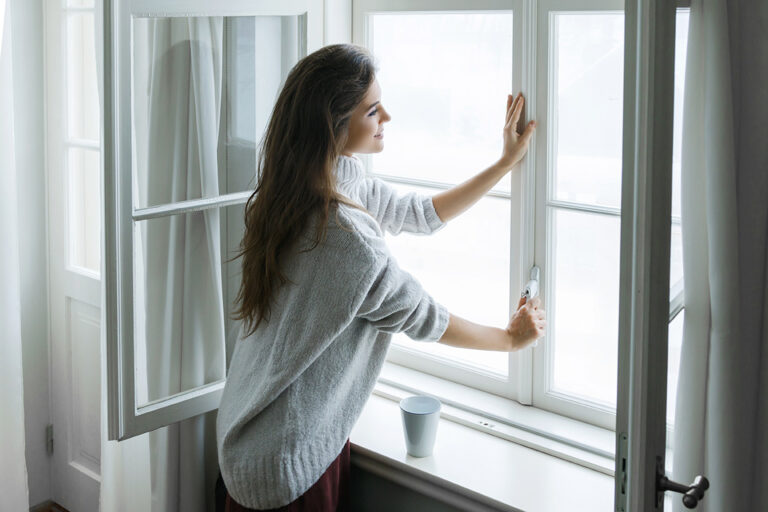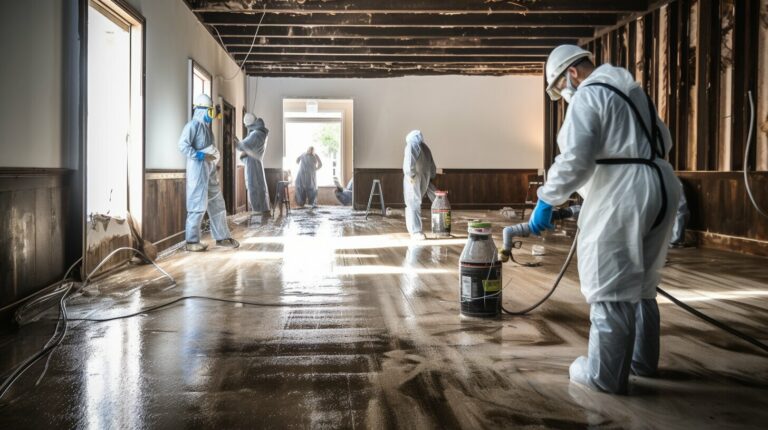Water damage often occurs unexpectedly due to storms and burst piping. If water damage occurs, immediate action is required to avoid more serious complications. These include mold growth, structural problems, and costly repairs. The use of a checklist will help you to ensure that there are no mistakes made during the restoration process. If you need to restore your Charlotte property from damage, this list can help keep you organized.
Step 1: Safety First
Prioritize your safety before tackling restoration. Water damage may be dangerous, especially if water levels have reached electrical outlets or structural elements.
- Turn the Power Off: If you see water on electrical outlets or appliances, turn off the electricity to prevent shocks. Wear rubber gloves or boots as an extra layer of protection.
- Identifying the Source and Stopping the Water: Determine the cause of water intrusion. A leaking roof, burst piping, or faulty appliances may cause it. Shutting down the main water source can prevent flooding.
- Assessing the Type of Water: Determine how clean, grey, or black the water is. Handling black water (often sewage, flooding, or stormwater) requires a professional.
Step 2: Document Damage
Documentation of the damage will help you make an insurance claim covering some or all restoration costs. Documentation is essential to prove damage and repair costs.
- Take Photos Capture Clear Images and Videos: Capture clear images of all damaged areas, including walls and floors.
- List Items: Create an inventory that includes electronic devices, furniture, and personal effects. This is useful when filing for compensation for damaged or missing property.
- Note All Structural Deterioration: Incorporate visible signs of structural damage, such as cracked walls, sagging ceilings, or warped surfaces, into your documentation. This information will help the company determine how much work is needed.
Step 3: Remove Standing Water
To begin the restoration process, it is important to remove all standing water. It may make the region simpler to evaluate and repair while lowering the chance of more harm.
- Use a Wet/Dry Vacuum: A wet/dry vacuum will remove minor floods from carpets, flooring, and other surfaces.
- Rent and Buy Water Pumps: If there is a severe flood, renting or purchasing submersible pumping systems may be necessary.
- Mop up Remaining Wetness: After removing the majority, use mops and towels to absorb all remaining moisture. This step reduces humidity.
Step 4: Drying The Area
It’s important to dehumidify, dry, and remove visible water to prevent mold from growing and further damage.
- Open Windows: If you can, open your windows and doors to allow air to flow. Consider using fans to circulate air in humid climates.
- Use a Dehumidifier: It is important to remove excessive moisture from the air, particularly in areas with little ventilation.
- Use industrial fans: High-powered fans can speed drying. For large-scale flood damage, rent industrial fans covering a larger surface area.
Professional water damage restoration in Charlotte will provide the latest drying equipment and expertise necessary to complete the drying process.
Step 5: Cleanse The Affected Areas
Clean and disinfect the area to prevent the growth of bacteria and other potential health risks associated with flooding.
- Use Antimicrobial cleansers: Apply antimicrobial solutions to all surfaces that come into contact with water, including walls, floors, baseboards, and salvaged furniture.
- How to Disinfect Personal Items: You can clean hard, nonporous materials like metal or wood furniture with a disinfectant. Professional cleaning is recommended for porous fabrics (such as upholstered furniture).
- Addressing mold growth: If you notice signs of mold, such as musty smells or dark areas, contact a professional for help. Mold grows quickly in humid areas, so early intervention is essential.
Step 6: Inspect for structural damage
Water damage could compromise structural integrity. Therefore, it’s important to conduct an inspection before repairing and restoring these areas.
- Walls and ceilings: Look for any cracks or sagging.
- Examine Flooring: If your floor is warped and discolored, you may want to consider replacing it. For vinyl and tile, you should look for signs that they are lifting or bubbling.
- Evaluate Windows & Doors: The water in the air can cause doors or windows to expand and warp. Ensure they can open and close correctly and check for signs of rotting and mold.
Conclusion
The restoration of water damage can be stressful. But by following the comprehensive checklist below, you’ll have confidence in each step. This checklist will guide you through sanitizing your property, documenting any damage, and drying it. In complex cases, hiring Charlotte damage repair experts will ensure that each aspect of restoration is handled with the utmost care.



















